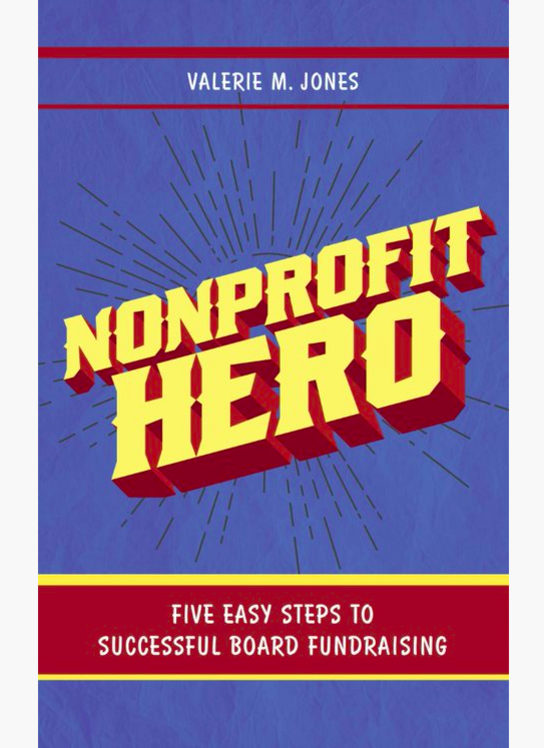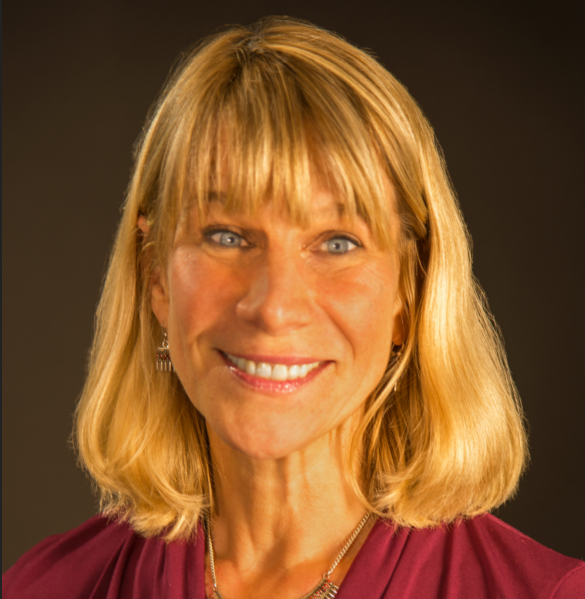 Cover image of Val Jones' book, Nonprofit HeroesA year ago, my friend and colleague, Valerie Jones, published Nonprofit Hero, Five Easy Steps to Successful Board Fundraising. She’s on a mission to tackle one of the most frequent issues with which I hear my nonprofit clients struggle: how do we get the board engaged with fundraising?
Cover image of Val Jones' book, Nonprofit HeroesA year ago, my friend and colleague, Valerie Jones, published Nonprofit Hero, Five Easy Steps to Successful Board Fundraising. She’s on a mission to tackle one of the most frequent issues with which I hear my nonprofit clients struggle: how do we get the board engaged with fundraising?
Val has great ideas around this topic, and in this interview, you'll learn more about her approach.
Why do board members struggle with their fundraising roles?
The two most common reasons members struggle with fundraising are their own fears and our “one-size-fits-all” approach to board assignments.
Fear. Accomplished leaders hate admitting that they’re afraid of anything—but they are. Common asking fears include: My friends will think I only want them for their money, they’ll reject me, and I won’t know what to say.
Who would want to ask if that’s the result? I tell trainees NOT to ask if they anticipate such outcomes and show them that the flip side of their asking fear is their asking strength.
For example, if they’re socially sensitive, they’re probably good listeners and can ascertain what a donor really wants. If they’re afraid they won’t know what to say, they’re probably good with data, explaining budgets and impact measures.
One size does NOT fit all. Too often, board members are told that “everyone must sell 10 gala tickets,” or raise a certain amount of money. We all prefer to do tasks that we’ll excel in, and we put off doing tasks we don’t like or think we’ll fail. I guide board members to play to their fundraising strengths, including who, where, and how they’ll prefer to ask, and to take the steps in the asking process at which they’ll shine.
Not everyone has to ask. A board member who thanks donors thoughtfully, personally, and touchingly can improve donor retention. A research-loving trustee can send you a steady flow of prospective donors.
What’s the impact of lackluster board fundraising?
A BoardSource survey found that 65% of board chairs and CEOs gave their own board a grade of C, D, or F in fundraising and that more than half of our country’s board members don’t want to ask their friends for contributions, yet board fundraising is one of the last untapped resources for nonprofits.
We’re all applying for as many grants as we can or sending out appeals and pleas on social media. But it’s not enough.
This year Giving USA reports the most significant decline in giving since the Great Recession. Equally worrying, the percentage of American households making gifts continues to decline. We’re at a critical juncture. I believe that the nonprofits with strong fundraising boards are the ones that will survive.
What makes your Nonprofit Hero approach unique?
In training thousands of folks to ask, I’ve learned what does (and does not) work. My approach starts with the easy steps: thanking and engaging current donors, continuing through research and cultivation until by the time they get to asking, they’re practically guaranteed a yes.
I’ve done extensive research to develop 16 distinct asking personalities, so we can cast each trustee in the role they can play best. I’ve also provided them with a simple, five-step framework, so they always know what they’ve done, what they should do now, and what comes next.
Too often, nonprofits assign individual tasks (like selling gala tickets) without the board member understanding how it fits into the big picture. I show them how to develop their personal mission statement and tie it back to that of their nonprofit. As a result, 100% of the boards I’ve trained see an increase in fundraising confidence and in willingness to participate in the fundraising process.
What are three easy ways nonprofits can improve board fundraising?
- Assign board "thankers" to unknown donors. Make sure that these trustees greet their donors at events, personalize their next appeals, and thank them for their next gifts. Your trustee will get to know the donor. The donor will feel they’ve made a friend and be more likely to keep giving.
- LinkedIn: Encourage trustees to list their board service/your nonprofit on their LinkedIn profile and to connect with each other and your nonprofit’s senior staff, especially development. It makes identifying connections to current/future donors so much easier!
- Build your development committee. Rather than just recruiting folks to the development committee, ask who wants to serve as the Thanking Chair or Research or Cultivation Chair of that committee. They’ll jump at the chance to help in ways they like and that are truly needed.
 Valerie Jones, author of Nonprofit HeroesValerie M. Jones, CFRE, brings her intelligence, spirit, and determination to fund development. She’s coached 5,000+ volunteer and professional fundraisers to ask for gifts in ways that are authentic, comfortable, and successful. A dynamic speaker, she’s addressed audiences from Baltimore to Beijing. In 2018, Amazon named her book, Nonprofit Hero, Five Easy Steps to Successful Board Fundraising, one of its Top Ten Hot New Releases for Nonprofits.
Valerie Jones, author of Nonprofit HeroesValerie M. Jones, CFRE, brings her intelligence, spirit, and determination to fund development. She’s coached 5,000+ volunteer and professional fundraisers to ask for gifts in ways that are authentic, comfortable, and successful. A dynamic speaker, she’s addressed audiences from Baltimore to Beijing. In 2018, Amazon named her book, Nonprofit Hero, Five Easy Steps to Successful Board Fundraising, one of its Top Ten Hot New Releases for Nonprofits.